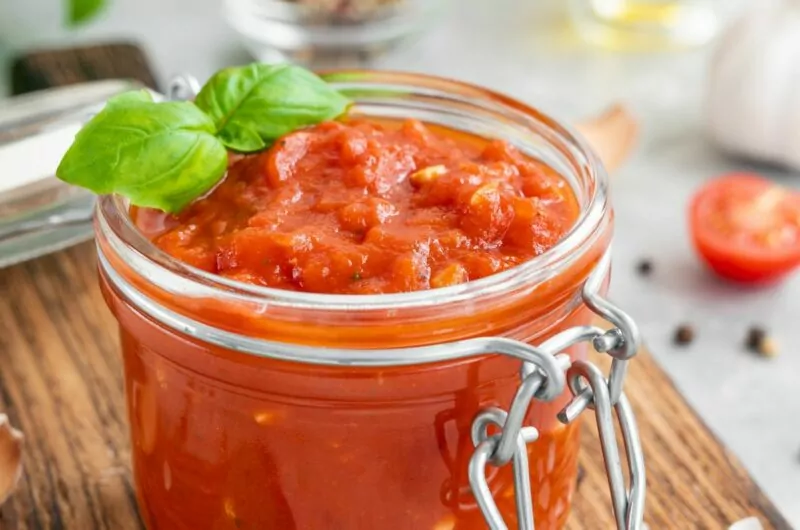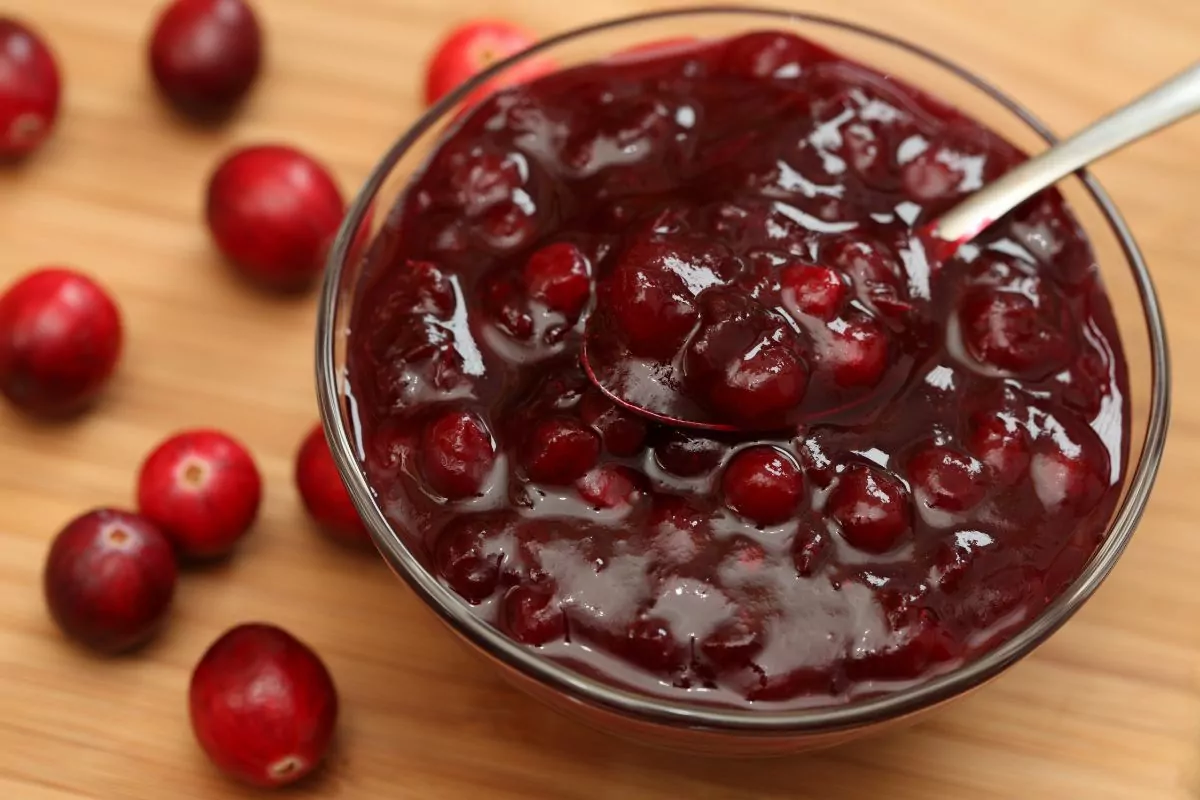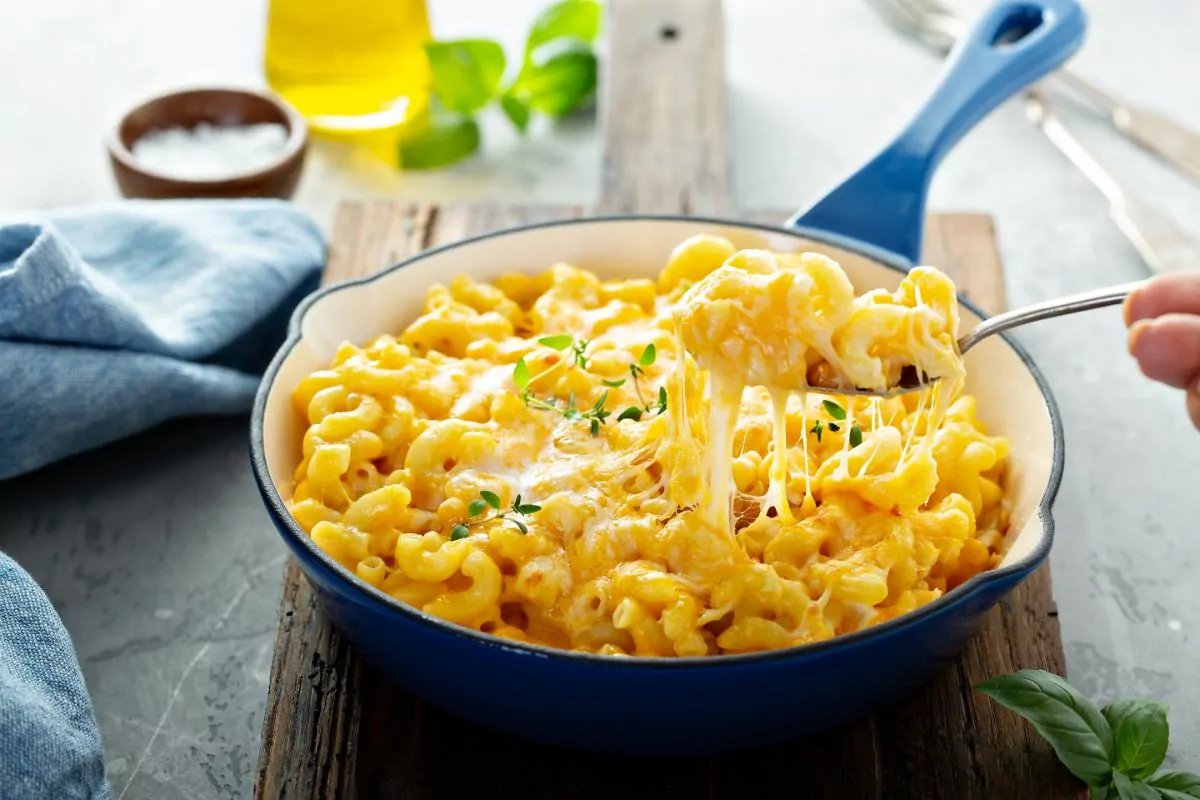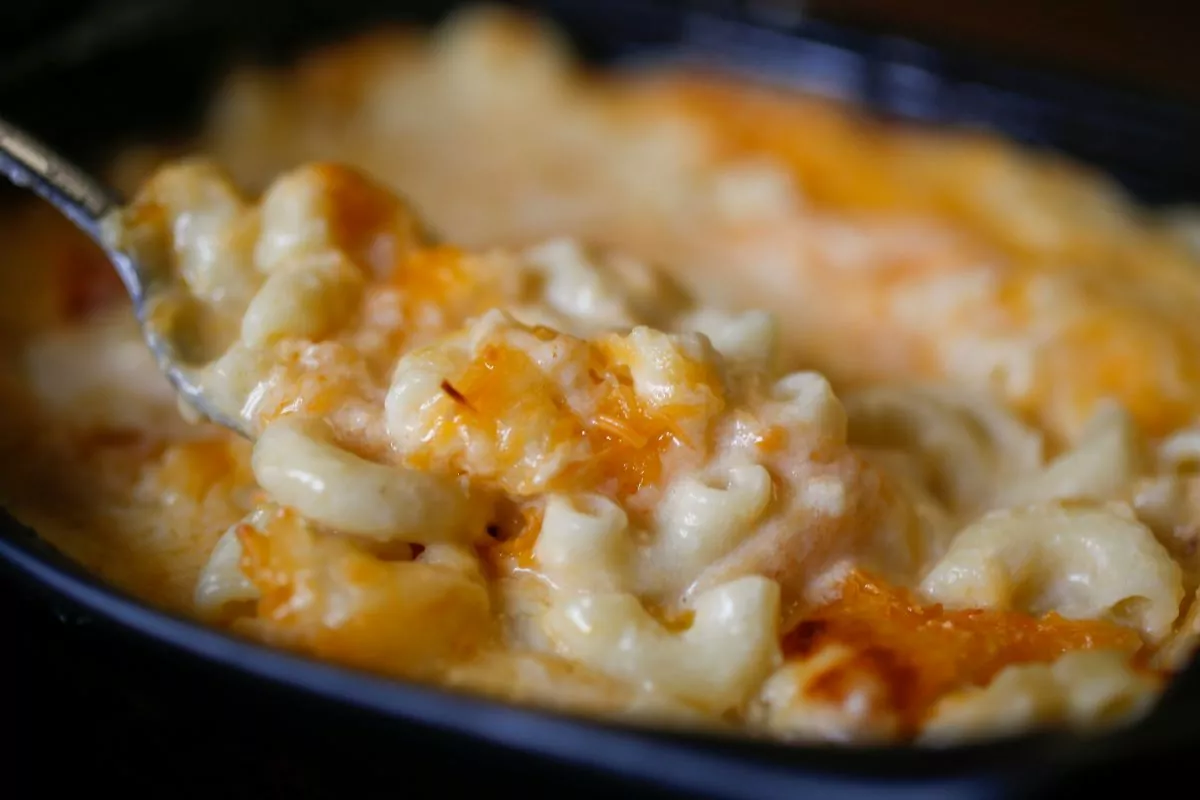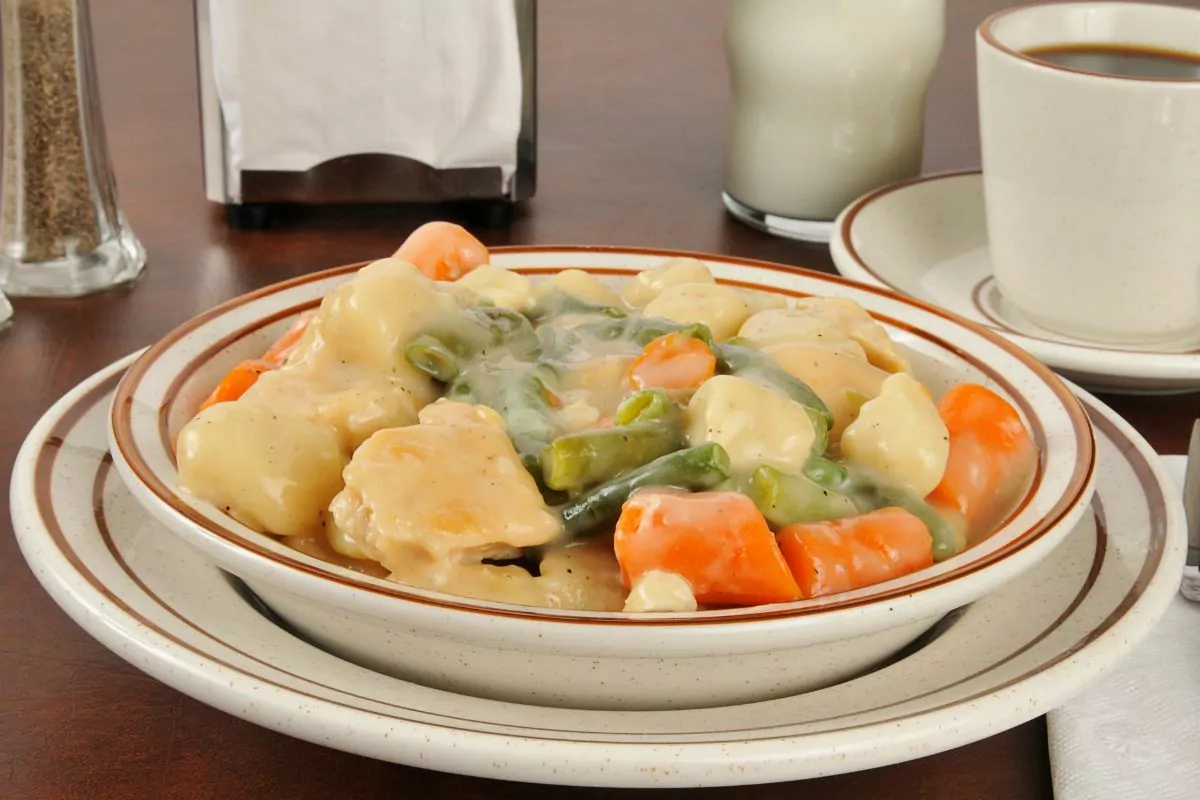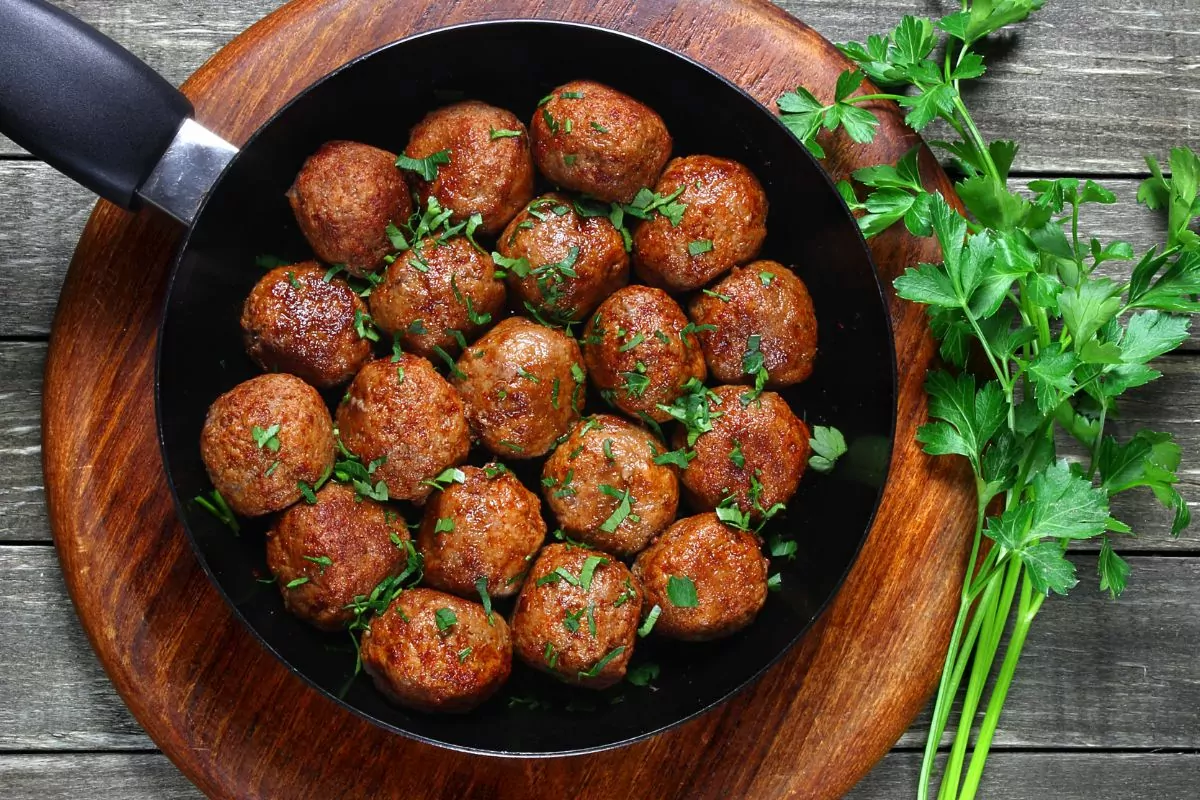Marinara sauce is the backbone of Italian cooking, renowned for its simplicity and robust flavors.
One of our favorite chefs, Rachael Ray, takes this classic sauce to new heights with three distinct variations.
Each recipe offers a unique twist on the traditional sauce, from a quick five-minute preparation to a richer version brimming with umami.
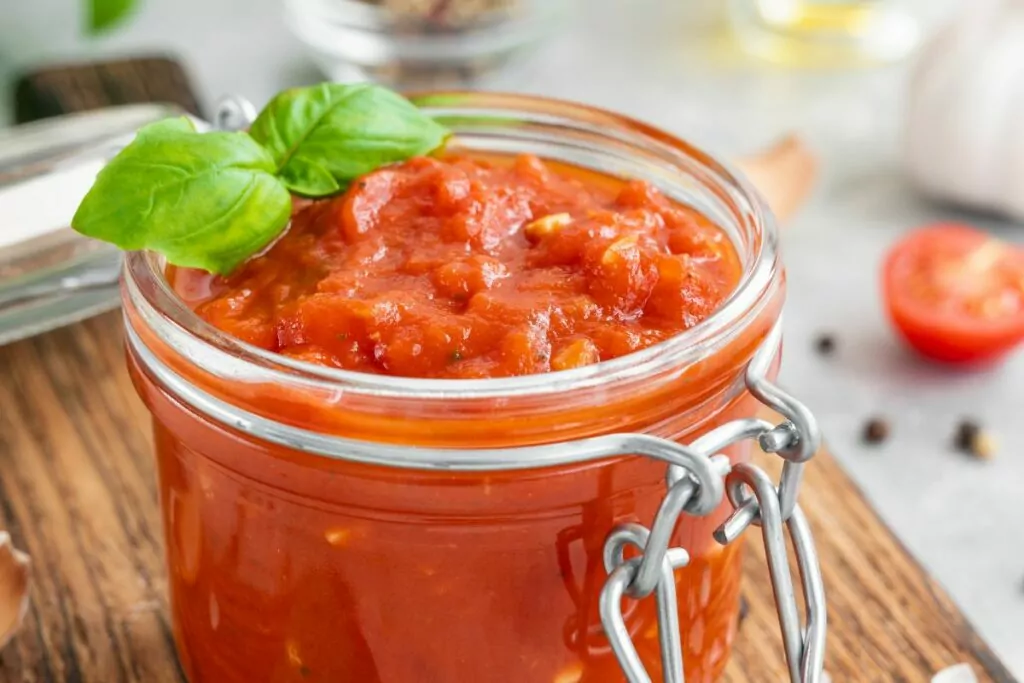
Join us as we explore these three stunning renditions and show you how to incorporate them into various dishes.
Rachael’s marinara recipes promise to bring the warmth and depth of Italian cuisine to your table.
1. Rachael Ray’s 5-Minute Marinara Sauce
Rachael Ray’s 5-minute marinara sauce is a brilliant showcase of efficiency and flavor. It starts with heating extra virgin olive oil in a saucepan, followed by adding crushed garlic to sizzle, infusing the oil with its aromatic essence.
Red pepper flakes add a gentle heat, while flat-leaf parsley and dried oregano contribute herbaceous notes. The sauce gains its body from a combination of crushed and chunky-style crushed tomatoes, offering a rich texture with a fresh tomato taste.
Seasoned simply with salt and black pepper, it’s brought to a simmer, allowing the flavors to meld quickly without losing their vibrancy.
This marinara sauce proves that with quality ingredients and a few minutes, you can create a sauce that rivals those that have simmered for hours, perfect for a quick pasta dish, a base for pizza, or a dipping sauce for appetizers. Its simplicity does not compromise on flavor, making it a versatile addition to any culinary repertoire.
2. Rachael Ray’s Umami Marinara Sauce
This umami marinara sauce elevates the traditional tomato base with layers of savory depth.
The process begins by melting anchovy filets in extra virgin olive oil, creating a rich, umami-packed foundation. Grated garlic is then stirred in, adding a pungent kick.
Sun-dried tomato paste deepens the sauce’s flavor profile, while a splash of sweet vermouth or red wine introduces a complex, slightly sweet note.
Adding chicken stock or water ensures a smooth consistency, complemented by dried oregano or marjoram and a hint of red chili flakes for warmth.
Crushed Italian tomatoes form the heart of the sauce, simmered for 20 minutes to marry the diverse flavors into a cohesive, robust sauce.
This version of marinara introduces an intriguing blend of tastes, with the umami from anchovies setting a savory backdrop against the tangy sweetness of tomatoes.
Perfect for enriching any pasta dish, this sauce is an excellent base for meatballs or a sophisticated topping for homemade pizza.
3. Rachael Ray’s Simple Marinara Dipping Sauce
Rachael Ray’s simple marinara dipping sauce is designed for those who appreciate the essence of Italian flavors without the complexity.
It begins with a base of extra virgin olive oil heated in a pot, into which finely chopped garlic and red pepper flakes are added, creating a spicy and aromatic start.
The optional anchovy paste can be included for an added depth of flavor, enriching the sauce with a subtle fishiness that complements the tomatoes.
Chopped flat-leaf parsley brings a fresh, herbal lift to the sauce, while crushed tomatoes provide the sweet and acidic backbone essential to any great marinara.
After a brief simmer, the sauce is seasoned with salt and pepper, adjusting the flavors to perfection.
With its straightforward preparation and vibrant taste, this dipping sauce is ideally suited for accompanying a variety of snacks and appetizers, from crispy garlic bread to cheese sticks, or even as a base for more complex dishes.
Our Top Tips For Making The Perfect Marinara Sauce
We’ll leave it up to you to decide which of Rachael’s marinara sauces you will try first. Whatever you pick, keep our top tips in mind. We’ve outlined them below.
- Quality of Tomatoes: The foundation of a standout marinara is the tomatoes. If using canned, San Marzano tomatoes are the gold standard for their sweetness and low acidity. Fresh tomatoes? Choose ripe, in-season varieties for the best flavor.
- Crushing by Hand: For a more rustic texture and fresher taste, crush your tomatoes by hand. This method offers control over the consistency and introduces a more dynamic texture to your sauce.
- Simmering Time: While it’s a quick sauce, don’t rush your marinara. Allow it to simmer gently, which concentrates the flavors. However, if it’s too long, you’ll lose the tomatoes’ brightness. Around 20-30 minutes should do the trick.
- Fresh vs. Dried Herbs: Use fresh basil for its vibrant color and flavor, adding it towards the end of cooking to preserve its essence. Dried oregano, on the other hand, benefits from a longer cooking time to meld its flavors with the sauce.
- The Oil Factor: Don’t skimp on the olive oil. It carries the flavor of the garlic and herbs throughout the sauce, adding depth and richness. A good quality extra virgin olive oil makes a noticeable difference.
- Garlic Technique: Minced, sliced, or crushed? Your choice impacts the flavor. Minced garlic distributes more flavor throughout the sauce, while sliced or lightly crushed cloves offer a subtler taste. For a more pronounced garlic flavor, sauté it until fragrant to avoid bitterness.
- Seasoning: Salt your sauce in layers. Start with a pinch when you add the garlic to the oil, then season the tomatoes as they cook. Taste and adjust at the end. This builds a more complex flavor profile.
- Acidity and Sweetness Balance: A pinch of sugar can balance the tomatoes’ natural acidity. Alternatively, a splash of balsamic vinegar adds both sweetness and a bright kick, enriching the sauce’s complexity.
- Heat Level: A dash of red pepper flakes can add a warm, subtle heat that doesn’t overpower but complements the tomatoes. Add it with the garlic so the oil absorbs its flavor, distributing it evenly throughout the sauce.
- Finish with Fat: Stirring in a pat of butter or a splash of olive oil right at the end can transform the texture of your marinara, giving it a silky finish that clings beautifully to pasta.
Remember, the best tip is to taste as you go and trust your palate. The perfect marinara is one that suits your taste perfectly. These guidelines are just a starting point for you to experiment and find your ideal balance of flavors.
Our Favorite Recipes For Rachael’s Marinara Sauce
Now, let’s take a look at how we can use these delicious marinara sauces.
1. Creamy Spaghetti With Marinara And Mascarpone
Transform Rachael Ray’s marinara into a decadent pasta dish with creamy spaghetti using this marinara and mascarpone recipe.
Begin by sautéing onion and garlic, then intensify the flavors with sun-dried tomato and chile paste. A deglaze with sweet vermouth or vodka, followed by the addition of aged balsamic vinegar and crushed Italian San Marzano tomatoes, forms a rich base.
Cook spaghetti to al dente perfection, and blend it with the marinara sauce enriched with creamy mascarpone. The result is a lusciously smooth pasta beautifully coated in a vibrant, creamy sauce. Finish with grated Pecorino-Romano and fresh basil.
2. Pasta With Cherry Tomato Marinara
This yummy pasta with cherry tomato marinara recipe offers a fresh and vibrant take on the classic sauce.
It starts with olive oil heated in a skillet, into which garlic is added for flavor. Cherry tomatoes, halved and seasoned with oregano and red pepper flakes, are then cooked until tender, their juices melding with the garlic to form a light, fragrant sauce.
Basil leaves are stirred in for a fresh herbal note. Tossed with al dente cavatappi pasta, the dish is finished with a sprinkle of grated cheese and a drizzle of extra virgin olive oil, enhancing the sauce’s fresh tomato flavor.
This pasta dish, characterized by its simplicity and bright colors, is perfect for a quick weeknight dinner or a casual gathering.
3. Pork ‘Parm’ With Polenta And Marinara Sauce
Rachael Ray’s pork ‘parm’ with polenta and marinara sauce reimagines a classic dish with a tender twist.
Thin pork loin chops are breaded and fried to golden perfection, then served over creamy polenta, with the marinara sauce spooned over the top.
The pork is seasoned with fennel pollen, adding a subtle anise flavor that pairs wonderfully with the savory tomato sauce. The polenta offers a soft, comforting base that complements the crispiness of the pork.
This dish is a testament to the versatility of marinara sauce, demonstrating how it can elevate a simple meat and polenta dish into a gourmet experience. Combining textures and flavors—from the crispy, savory pork to the smooth, creamy polenta and the rich, flavorful marinara sauce—creates a balanced and satisfying meal suitable for any occasion.
Final Thoughts
Rachael Ray’s marinara sauces exemplify the versatility and richness of Italian cooking.
Whether whipped up in five minutes, enriched with umami flavors, or prepared as a simple dipping sauce, each version brings something unique to the table.
By incorporating these sauces into a range of dishes, from creamy pastas to hearty pork ‘parm’, the possibilities are endless.
Which marinara sauce will you try your hand at first?
Frequently Asked Questions
Marinara is a simple, quick-cooking sauce mainly featuring tomatoes, garlic, herbs, and olive oil, while spaghetti sauce can be more complex, including ingredients like meat, vegetables, and sometimes even cream.
Italian tomato sauce is a broad term that can refer to various tomato-based sauces used in Italian cooking, whereas marinara is a specific type of tomato sauce that’s typically lighter and quicker to prepare.
To enhance marinara sauce, consider adding fresh herbs, a splash of good quality wine, sautéed vegetables like mushrooms or bell peppers, or stirring in some cream or cheese for added richness and flavor.
How To Make Rachael Ray’s Marinara Sauce – 3 Ways
Course: Rachael Ray4
servings30
minutes40
minutes300
kcalIngredients
Directions
- Choose a marinara recipe
- Gather your ingredients
- Prep your sauce
- Enjoy.
Recipe Video
https://www.youtube.com/watch?v=B7_ug0kKNwkVideo can’t be loaded because JavaScript is disabled: Pasta with Cherry Tomato Marinara (https://www.youtube.com/watch?v=B7_ug0kKNwk)- 16 Martha Stewart Baking Recipes You Have To Try - May 29, 2024
- 19 Of The Best Martha Stewart Cake Recipes Ever - May 28, 2024
- How To Make A Tasty Ina Garten Red Velvet Cake At Home - May 24, 2024

